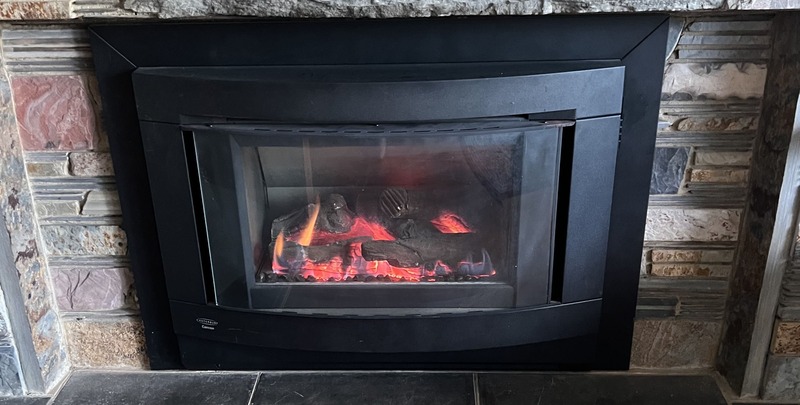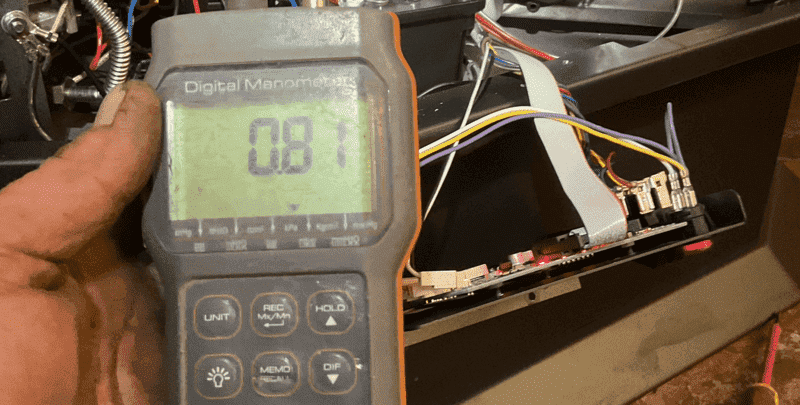
Are Gas Heaters Safe to Use Indoors?
As winter settles in and temperatures drop, many turn to gas heaters to keep their indoor spaces warm and cosy.
The allure of a toasty room on a cold day is undeniable, but with the comfort that gas heaters provide comes the responsibility of ensuring their safe use indoors.
Understanding How Gas Heaters Work
Gas heaters, which burn natural gas or propane, have gained popularity for their efficiency and cost-effectiveness. Whether you’re using them as a supplementary heating source or relying on them exclusively, understanding the nuances of their operation is essential.
This article delves into the safety aspects of using gas heaters indoors, shedding light on potential risks and providing comprehensive guidelines for secure usage.
Gas heaters come in various shapes and sizes, offering flexibility for different settings. Understanding how these old and new heaters work is crucial to ensure their safe operation, as the choices range from portable models that users can move around to fixed, built-in systems integrated into the infrastructure.
The Importance of Gas Safety
While the warmth emitted from the air used by gas heaters is inviting, safety should always be the primary concern. Indoor gas heaters and air pollutants introduce unique risks, including carbon monoxide emissions and fire hazards.
This article will explore these risks in detail, providing insights into the potential dangers of indoor air pollution and offering guidelines to mitigate them effectively.
Join us on this exploration of gas heater safety, where we’ll delve into the different types of gas heaters, examine the potential risks associated with their indoor use, and provide practical safety guidelines for users.
Whether you’re a seasoned gas heater user or considering incorporating one into your indoor heating strategy, this comprehensive guide aims to empower you with the knowledge needed to enjoy the warmth of gas heaters responsibly and safely.

Potential Risks of Using Gas Heaters Indoors
While gas heaters are convenient for warming up chilly indoor spaces, it’s crucial to be aware of the potential risks they pose. Here are the main concerns:
- Gas leaks: Gas heaters rely on fuel, typically propane or natural gas, which can leak if the equipment is faulty or improperly installed. Even small leaks can lead to a buildup of gas in the air, posing a serious risk of fire or explosion. It’s essential to regularly inspect your gas heater for any signs of leakage, such as a hissing sound or a distinct odour like rotten eggs.
- Carbon monoxide leaks: One of the most dangerous risks associated with gas heaters is the potential for carbon monoxide (CO) leaks. CO is a colourless, odourless gas that can be emitted when fuel is burned incompletely. Breathing in CO can lead to carbon monoxide poisoning, which can cause symptoms ranging from headaches and dizziness to nausea and even death. Installing a carbon monoxide detector near your gas heater can provide early warning of any leaks.
- Fire hazards: Gas heaters generate heat through combustion, which means there’s always a risk of fire if flammable materials come into contact with the heater or if the heater malfunctions. Keep flammable items like curtains, furniture, and clothing at a safe distance from the heater, and never leave the heater unattended while it’s in use.
Being aware of these potential risks and taking appropriate precautions can help ensure that you can safely enjoy the warmth provided by your gas heater indoors.
Safety Guidelines for Gas Heater Usage
Using a gas heater indoors can be a convenient way to keep warm during colder months, but it’s important to follow safety guidelines to prevent accidents and ensure your well-being.
Here are some essential tips to keep in mind:
- Proper ventilation: Ensure that the room where you’re using the gas heater is well-ventilated. Open windows or doors periodically to allow fresh air to circulate and prevent the buildup of carbon monoxide.
- Regular maintenance: Schedule regular maintenance checks for your gas heater to ensure that it’s functioning properly. This includes inspecting for gas leaks, cleaning or replacing filters, and ensuring that all components are in good condition.
- Carbon monoxide detector: Install a carbon monoxide detector near your gas heater and test it regularly to make sure it’s working correctly. This device can provide early warning of any CO leaks, allowing you to take action quickly.
- Safe placement: Place the gas heater on a stable, level surface away from flammable materials such as curtains, furniture, or bedding. Maintain a safe distance of at least three feet around the heater to prevent accidental fires.
- Supervision: Never leave the gas heater unattended while it’s in use. Keep an eye on it to ensure that everything is functioning properly and to prevent any accidents.
By following these safety guidelines, you can enjoy the warmth of your gas heater indoors with peace of mind, knowing that you’re taking the necessary precautions to stay safe.

Choosing a Safe Gas Heater
When selecting a gas heater for your indoor space, safety is paramount with gas heating appliances. Considerations such as certifications, compliance with safety standards, and specific safety features are crucial in ensuring the secure operation of your central heating units and gas appliances.
Certification and Compliance
Ensure that the gas heater you choose carries certifications from reputable safety organisations. Look for well-known certifications from Underwriters Laboratories (UL) and other recognised regulatory bodies. These certifications indicate that the gas heater serviced has undergone rigorous testing to meet safety standards, assuring you of its reliability and adherence to industry guidelines.
Thoroughly review the product specifications to confirm that the gas heater complies with industry safety standards and regulations. Manufacturers typically provide information about the heater’s compliance in the user manual or on the product packaging.
Understanding and verifying compliance ensures that the gas heater meets the necessary safety requirements, reducing the risk of potential hazards.
Safety Features to Look Out For
- Automatic shut-off mechanisms: Choose a gas heater equipped with automatic shut-off mechanisms. In the event of a malfunction, these features activate to prevent gas release or the continuation of unsafe conditions. Automatic shut-off mechanisms enhance safety by quickly responding to potential issues, reducing the risk of gas leaks or other hazardous situations.
- Overheat protection: Prioritise gas heaters that include overheat protection features. These features automatically turn off the heater if it reaches dangerously high temperatures. Overheating poses a significant risk of fires, and having a built-in safeguard against this ensures an additional layer of protection for you and your property. When evaluating potential heaters, confirm that they incorporate overheat protection to mitigate the risk of fire-related incidents.
By prioritising safety certifications, compliance with standards, and specific safety features when selecting a gas heater, you enhance the overall safety of your indoor heating system. These considerations provide peace of mind and a secure and comfortable gas-heating experience for you and your household.
Ensure Gas Heater Safety
Gas heaters emerge as efficient allies in the pursuit of warmth and comfort during colder seasons. Yet, the key to fostering a cosy indoor environment transcends the mere functionality of these heaters; it hinges on responsible and informed use by individuals. Prioritising safety becomes paramount for unlocking the full potential of gas heaters.
This conclusion underscores the integral components for ensuring gas heater safety: the need for users to be well-informed about proper practices, recognise the significance of user manuals as comprehensive guides, learn from real-life incidents to make informed decisions, and provide preventive measures through knowledge. Prioritise your safety with the help of professional services and experts to ensure gas heaters are correctly installed in your homes.
By combining awareness with responsible habits, users of portable outdoor heaters and gas appliances can create a warm and secure indoor haven, enjoying the benefits of portable outdoor gas appliances and heaters without compromising their well-being. Stay informed, stay warm, and, above all, stay safe.
Please note: This information is provided for advice purposes only. Regulations differ from state to state, so please consult your local authorities or an industry professional before proceeding with any work. See our Terms & Conditions here.
Published: 30 April 2024